
George Glenn Jones was an American country musician, singer, and songwriter. He achieved international fame for a long list of hit records, including his best-known song "He Stopped Loving Her Today", and for his distinctive voice and phrasing. For the last two decades of his life, Jones was frequently referred to as "the greatest living country singer". Country music scholar Bill Malone wrote, "For the two or three minutes consumed by a song, Jones immerses himself so completely in its lyrics, and in the mood it conveys, that the listener can scarcely avoid becoming similarly involved." The shape of his nose and facial features earned Jones the nickname "The Possum". Jones has been called "The Rolls-Royce of Country Music" and had more than 160 chart singles to his name from 1955 until his death in 2013.

Melba Joyce Montgomery is an American country music singer and songwriter. She is known for a series of duet recordings made with George Jones, Gene Pitney and Charlie Louvin. She is also a solo artist, having reached the top of the country charts in 1974 with the song, "No Charge". Born in Tennessee but raised in Alabama, Montgomery had a musical upbringing. Along with her two brothers, she placed in a talent contest which brought her to the attention of Roy Acuff. For several years she toured the country as part of his band until she signed with United Artists Records in 1963.

"Blue Eyes Crying in the Rain" is a song written by songwriter Fred Rose. First recorded by Elton Britt in 1946, then made more popular by Roy Acuff in 1947, the song has been covered by many artists, including Hank Williams Sr., Johnny Russell, Charley Pride, and Elvis Presley. Most notably, the song was recorded by Willie Nelson as part of his 1975 album Red Headed Stranger. Both the song and album revived Nelson's success as a singer and recording artist.
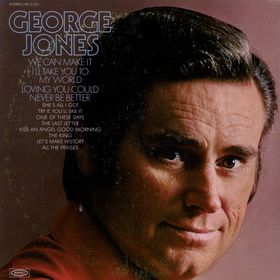
George Jones, also titled George Jones (We Can Make It) was the 1972 country music studio album released by George Jones in April 1972. The release was Jones' 46th studio album release since a debut from 16 years previous. Also as a highlight in his career, it was the first release made on Jones' new label, Epic Records.
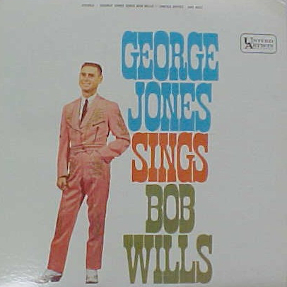
George Jones Sings Bob Wills is an album by American country music artist George Jones. It was released in 1962 on the United Artists Records.

Sings Country and Western Hits is the 1961 country music studio album released in May 1961 by George Jones. The album was Jones' tenth studio album release since his debut LP in 1956. It would be one of his last with Mercury Records, as he switched to United Artists in late 1961.
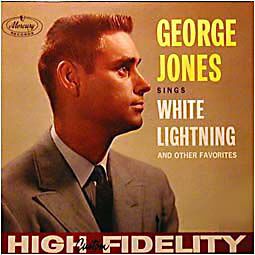
White Lightning and Other Favorites is a studio album released by George Jones on May 26, 1959. Its title track "White Lightning" was a #1 Country hit in 1959.
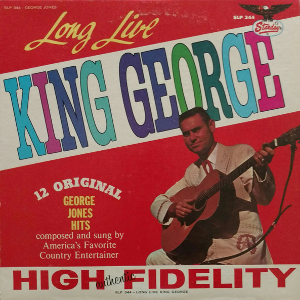
Long Live King George is a 1965 country music album released by George Jones. The album was long thought to be a studio release; however, it is a late Starday Records compilation of Jones recordings throughout the mid- to late 1950s.

Grand Ole Opry's New Star is the debut studio album released by George Jones in November 1956 with Starday Records. Produced by Jones' manager Pappy Daily, the album was recorded during early sessions in 1954, throughout 1955, and other sessions in 1956. It is also the first album to be released on the Starday label, a label only four years old.

The albums discography of American country artist, George Jones contains 80 studio albums, 132 compilation albums, three live albums, ten video albums and seven box sets. Of his studio albums, 69 are solo releases while 11 are collaborative releases. In 1956, Jones's debut studio LP was issued on Starday Records titled, Grand Ole Opry's New Star. The label only issued one studio effort, but would release a series of compilation. On Mercury Records, Jones released six studio LP's including Country Church Time (1959) and George Jones Salutes Hank Williams (1960). He switched to the United Artists label in 1962, where he released 13 studio LP's. Among these was a collaborative LP with Melba Montgomery called What's in Our Hearts (1963), which was his first to chart the Billboard Top Country Albums survey. He moved to Musicor in 1965. Among the label's studio LP's was I'm a People (1966), which reached the top of the Billboard country survey. Musicor also issued his first collaborative studio album with Gene Pitney, which made the Billboard country LP's chart and the Billboard 200.

"Why Baby Why" is a country music song co-written and originally recorded by George Jones. Released in late 1955 on Starday Records and produced by Starday co-founder and Jones' manager Pappy Daily, it peaked at 4 on the Billboard country charts that year. It was Jones' first chart single, following several unsuccessful singles released during the prior year on Starday.
"White Lightning" is a song written by the rockabilly artist J. P. Richardson, best known by his stage name, the Big Bopper. The song was recorded by American country music artist George Jones and released as a single in February 1959. On April 13, 1959, Jones' version was the first number-one single of his career. The song has since been covered by numerous artists. Richardson never got to see the success of the record, as he had been killed in an airplane accident 6 days before its release.
"The Race Is On" is a song written by Don Rollins and made a hit on the country music charts by George Jones and on the pop and easy listening charts by the unrelated Jack Jones. George's version was the first single released from his 1965 album of the same name. Released as a single in September 1964, it peaked at number three on the Billboard Hot Country Singles chart and at number 96 on the Billboard Hot 100 in January 1965. Jack's version topped Billboard's Easy Listening chart and reached number 15 on the Hot 100 the same year. The two recordings combined to reach number 12 on the Cashbox charts, which combined all covers of the same song in one listing and thus gave George Jones his only top-40 hit. The song uses thoroughbred horse racing as the metaphor for the singer's romantic relationships.
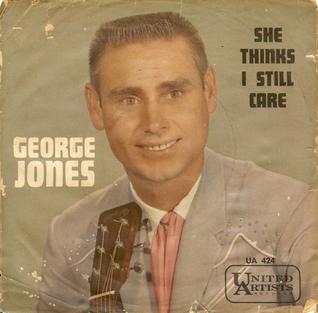
"She Thinks I Still Care" is a country song written by Dickey Lee and Steve Duffy. The song was recorded by multiple artists, including George Jones, Connie Francis, Anne Murray, Elvis Presley and Patty Loveless.
"Walk Through This World with Me" is a song written by Sandy Seamons and Kaye Savage and recorded by American country music artist George Jones. It was released in January 1967 as the title track of his twenty-fourth album. The single was George Jones' fifty-seventh release on the country chart and his fourth number one. "Walk Through This World With Me" stayed at number one for two weeks and spent a total of nineteen weeks on the country chart.

The discography of American country artist, Melba Montgomery contains 29 studio albums, eight compilation albums, 61 singles, one other charting song and has appeared on five albums. Of her studio albums, 22 are solo releases while seven are collaborative releases. Of her singles, 42 are solo releases while 18 are collaborative. Montgomery collaborated with George Jones on 1963's "We Must Have Been Out of Our Minds", which reached number three on the Billboard Hot Country Songs chart. Together, they recorded several studio albums including What's in Our Heart (1963), which reached number three on the Billboard Top Country Albums chart. The United Artists and Musicor labels issued several more singles by the pair. Among them were the top 25 songs "Multiply the Heartaches" (1965) and "Party Pickin'" (1967). She also collaborated with Gene Pitney during the sixties on the top 20 single "Baby Ain't That Fine" (1965). Both United Artists and Musicor issued several solo studio albums and singles by Montgomery during the sixties also. Among them was the charting single "Hall of Shame" (1963) and the 1967 LP, Don't Keep Me Lonely Too Long (1967).

The singles discography of American country artist, George Jones, contains 182 singles. Of the total, 136 were released with Jones as the solo artist. In addition, 31 were issued with Jones being part of a collaboration. Thirdly, eight singles were issued with Jones being part of a featured act. Fourthly, seven released were promotional singles. Additionally, 14 songs that are not released as singles are included that made any major chart. Finally, 21 music videos which were first issued as singles are also listed. Jones had his first chart success in 1955 with several top ten Billboard Hot Country Songs singles: "Why Baby Why", "What Am I Worth" and "You Gotta Be My Baby". After several more top ten releases, "White Lightning" became his first to top the Billboard country chart. Along with "Who Shot Sam", both singles were also his first to make the Hot 100 charts.
"Color of the Blues" is a 1958 country song written by George Jones and Lawton Williams and released by Jones on January 15, 1958.
"Don't Stop the Music" is a song written and recorded by George Jones. It was his first single release on Mercury-Starday and peaked at #10 on the country singles chart in early 1957.
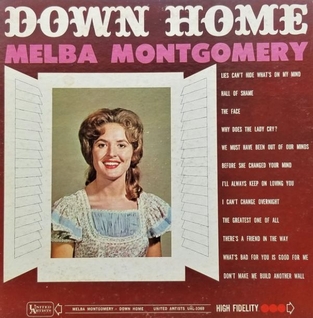
Down Home is a studio album by American country artist, Melba Montgomery. It was released in August 1964 via United Artists Records and contained 11 tracks. It was the third studio disc released in Montgomery's recording career and her second as a solo artist. Many of the album's tracks were penned by Montgomery herself. Two of its singles reached charting positions on the American country songs chart. It received a positive review from Billboard magazine in 1964.











